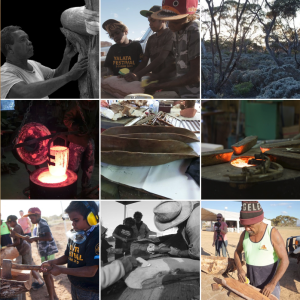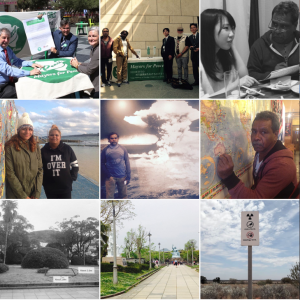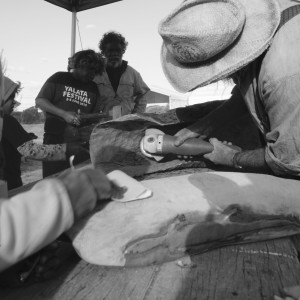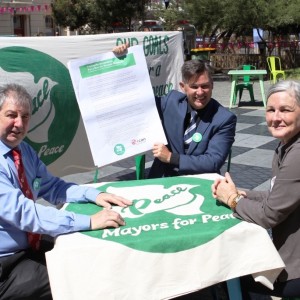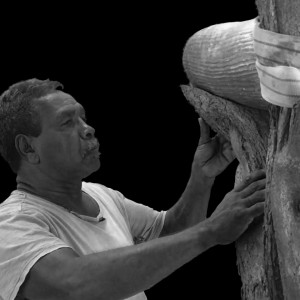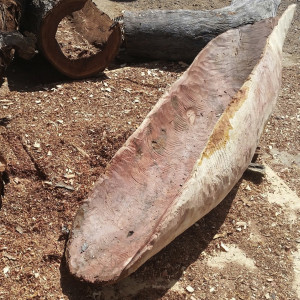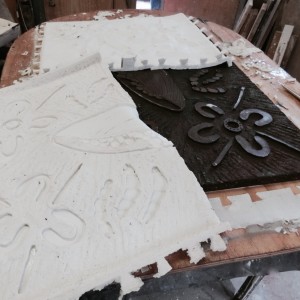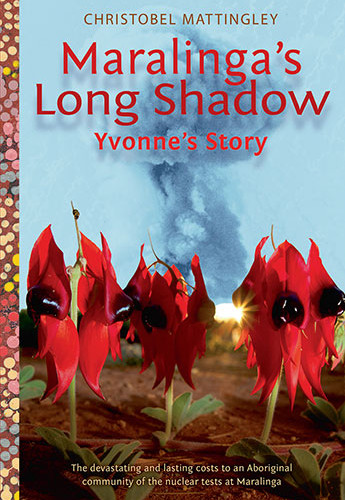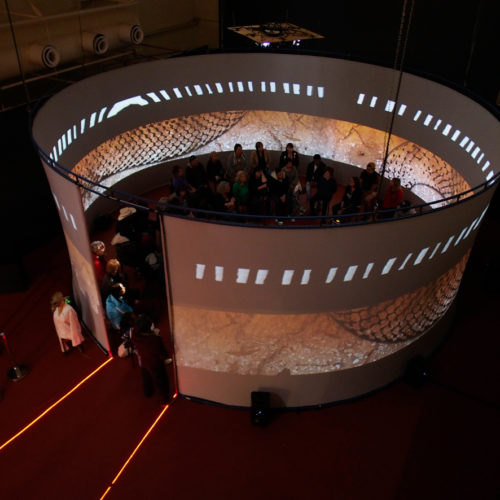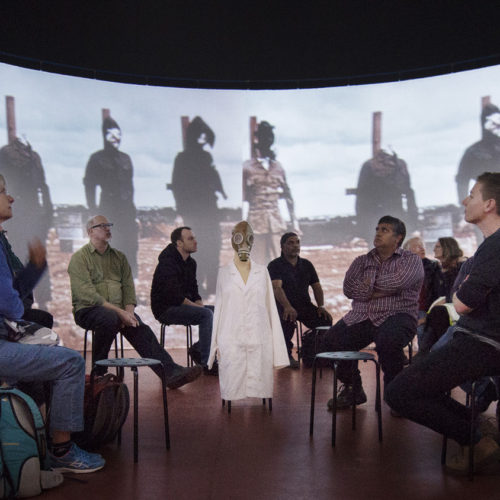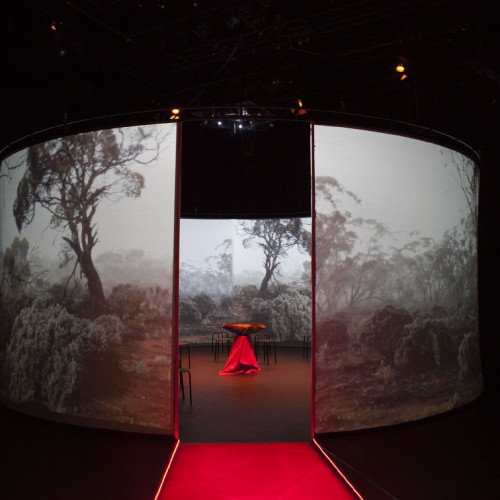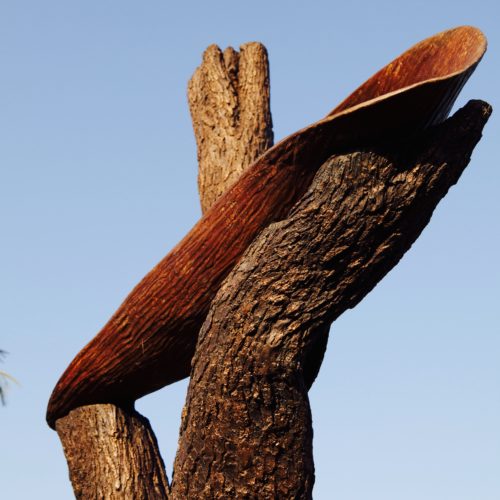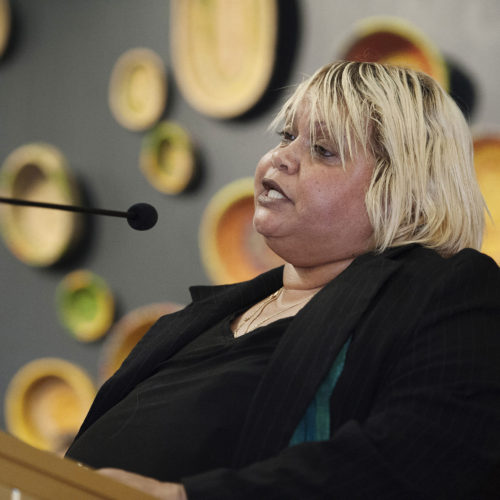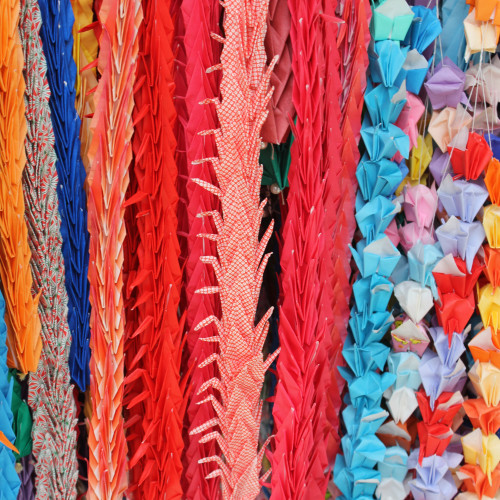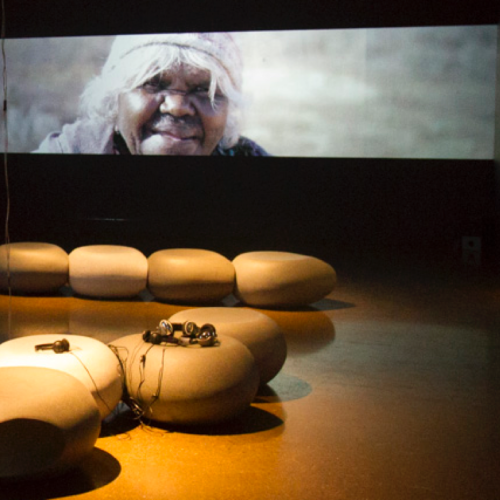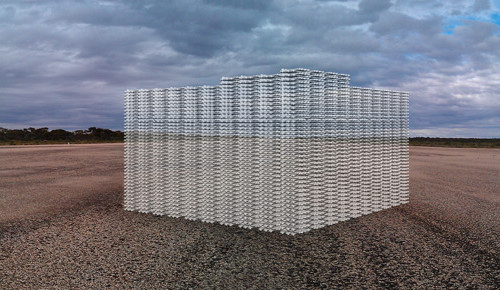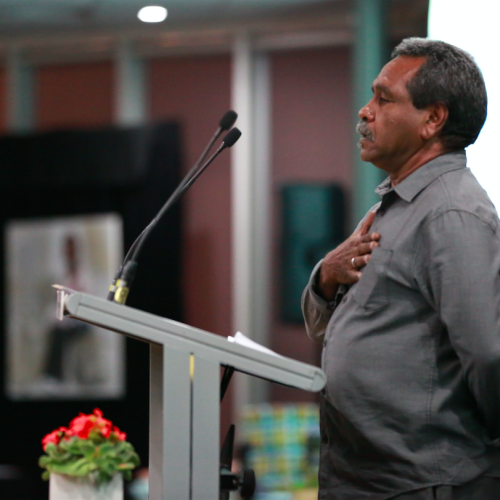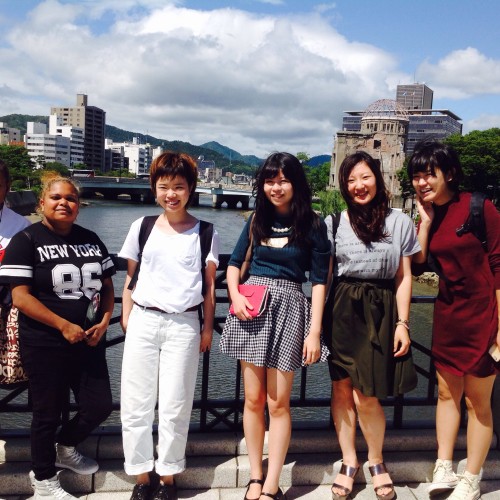-
Maralinga's Long Shadow: Yvonne's story wins NSW Premier's Award
- 7 years ago
- The annual NSW Premier's Awards for History, presented in Sydney on Friday 1 September 2017, saw one of our partnership projects honoured, when "Maralinga's Long Shadow: Yvonne's Story" took out the Young People's Hi[...]
Peace gift to Nagasaki- 18th April
Official Gifting – 18 April 2016, Nagasaki Peace Park
On Monday April 18, the first Australian sculpture will be unveiled and officially gifted to the people of Nagasaki, joining the internationally renowned collection of artworks from around the world at the Nagasaki Peace Park.
Australia’s sculpture-gift originates from the remote Aboriginal community of Yalata, in South Australia, and is a gift from one atomic survivor community to another. It will be officially gifted in collaboration with City of Fremantle, as lead city of Mayors for Peace Australia, and Cities of Cockburn and Subiaco in Western Australia.
The Australian delegation travelling to Japan includes Anangu artists and leaders such as Chairman Jeremy Le Bois (Maralinga Tjarutja Council) and Pastor Russell Bryant (Yalata Community Inc) and City of Fremantle’s Deputy Mayor Josh Wilson. To host and receive the gifting will Mayor Taue of Nagasaki City and other Japanese dignitaries and Hibakusha (atomic survivors). Representatives from the Australian Embassy in Tokyo are also attending.
Across the week, the Australian delegates will participate in a series of cultural exchange events with Japanese Hibakusha communities, presenting their stories to students at Nagasaki University and visiting groups in Hiroshima.
Bridging links between atomic survivor communities
The Tree of Life: Gift of Peace sculpture was inspired by the 70-year commemorations of the atomic bombings in Japan. The unique international peace initiative recognises atomic survivors worldwide, and acknowledges the sustained impacts on nuclear-affected communities, as well as the resilience of these communities. The gift links atomic survivors in Australia and Japan.
The sculpture represents the search by Anangu Aboriginal communities of Yalata and Oak Valley/ Maralinga in South Australia (SA) for peace and harmony, as Australian atomic survivors, and is linked with an existing community arts project being run with remote Indigenous communities whose recent history relates to the British nuclear tests of the 1950s at Maralinga. The project is funded by the Australia Council for the Arts, and in 2015 was awarded the Graham F. Smith Foundation’s annual major grant prize.
Australian Delegation travelling to Japan
Anangu participants
Indigenous leaders and artists from Yalata and Oak Valley/Maralinga (South Australia:
- Jeremy LeBois, Chair of Maralinga Tjarutja Council (MTC)
- Pastor Russell Bryant, Chair of Yalata Community Inc., part of the Yalata Men’s Sculpture Group
- Steve Harrison, carver and carpenter, part of the Yalata Men’s Sculpture Group
- Shilloh Peel, Yalata community member and arts-documentation team
- Alinta Smart, Yalata community member and arts-documentation team
- Douglas Smith, early career journalist, from Ceduna, arts-documentation team
Mayors for Peace Australia
- Deputy Mayor Josh Wilson, City of Fremantle
- Adrian Glamorgan, Mayors for Peace Western Australia, Working Group
Alphaville arts organisation
- Artist in residence (Yalata), John Turpie
- Creative producer, Dr. Paul Brown
- Photomedia artist, Jessie Boylan
- Cultural liaison, Rico Ishii
- Program manager, Ellise Barkley
- Artist, Siv Grava
The meaning of the sculpture
For the Yalata Men’s sculpture group leading the design and artwork, the gifting holds considerable meaning: the cast bronze sculpture depicts a piti (dish), originally from carved wood, being cradled by the branches of a local ‘cadja’ tree.
The piti, used for carrying babies, food, and water, represents the gift of peace, with the tree its ultimate donor. It represents the sharing of resources between families, communities and nations for peace and harmony.
A ‘piti’ (dish) cast in bronze from original carved wood, is placed as if cradled by the branches of a tree. Piti are used to carry food, water and other materials, and also serve as cradles for young children.
The word ‘piti’ is from the Pitjantjatjara language. It is the language of the Anangu, the people who experienced British nuclear testing at Maralinga in the 1950s, who were displaced from their lands, and who live with the impacts to this day.
As a gift, the piti represents the peace offering and sharing of resources between families and between communities. The bronze tree represents the survival of the natural environment after the atomic tests at Maralinga. Its truncated branches remind us of the landscape after the blast of the bomb.
The gift of the piti is also echoed in the small circular emblem on the central plaque, which shows hands reaching upwards to offer the gift.
The tree, which is a species local to Maralinga communities, is the tree that provides for the community, and it retains its life despite the blast. The tree is used to make tools and musical instruments and to provide firewood for cooking and warmth.
The friezes on the plinth are also important to the story of the sculpture: They are based on paintings typically produced by local artists.
The friezes depict families attending a negotiation. In Australian Aboriginal art, a kidney shaped symbol is widely used to represent individuals or groups of people seated in conversation.
In the friezes, the piti is placed between kidney shaped symbols, and the dish holds fruits and edible grubs, to symbolize how the piti is used for the exchange of gifts.
The plaques of the sculpture are in three languages – Japanese, Pitjantjatjara and English. They tell the story of the sculpture and recognize atomic survivor communities worldwide.
Overall the sculpture evokes a space in which peace is negotiated. The story of a peace negotiation is contained in the friezes, with the tree representing the link between families exchanging gifts and the natural landscape. The piti, as the central motif, represents the gift of peace, with the tree its ultimate donor.
Interested in supporting the project:
https://www.chuffed.org/project/giftforpeace
Project Supporters
Thanks to all the donors so far:
J.Levi, T. Jackson, J. Barkley-Jack, A. Harwood, J. Vallentine, J. Eaglesham, L. Ebert, M. Diesendorf, Z.I brahim-Mann, D. Collins, R&K Thomas, M. Deslandes, Womens International League for Peace and Freedom (WILPF) South Australian Branch, B. Frey, S. Jabbour, R. Tapper, J. Castle, L. Palmer, K. Hitchman, A. Crawford, Q. Goldfinch, N. Rowland, E. Wagner, M. Broderick, P. Graham, J. Mittmann, C. Daveson, Cr. J. Wilson, M. Fensom, J. Sammut, S. Miller, M. Maguire, D. Anagnostou, N.A.J. Taylor, G. Kuiper, T. Jones, C. Phillips, J. Ferguson, K. Lecchi, D. Riches, A. Wilson, M. Fairskye, S. Deslandes, P. Ireland, N. Packer, M. Bailey, K. Hughes, E. Barkley, C. Hodgkinson, K. Forde, K.Coleman, M. Hughes, P. Murphy, N. Pothen, J. Gennissen, M. Conway, C. Janson, H. Klaebe, D. McCarthy, S. Cullis, E. Walker, A. John, C. Paterson, H. Kuroiwa
The gifting has been assisted by the Australian Government through the Australia Council, its arts funding and advisory body, and is administrated by Sydney-production company Alphaville through the Nuclear Futures program www.nuclearfutures.org Supported by Cities of Fremantle, Cockburn and Subiaco, Mayors for Peace Australia, and Graham F. Smith Peace Foundation.
There is a 3 min promotional video about the gifting at: https://vimeo.com/157540670
